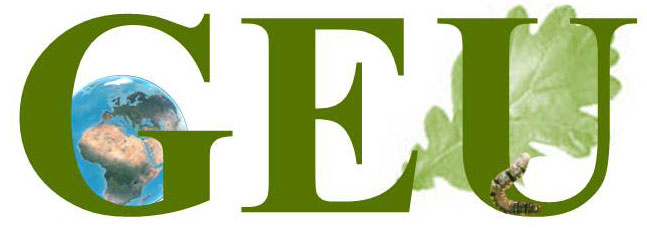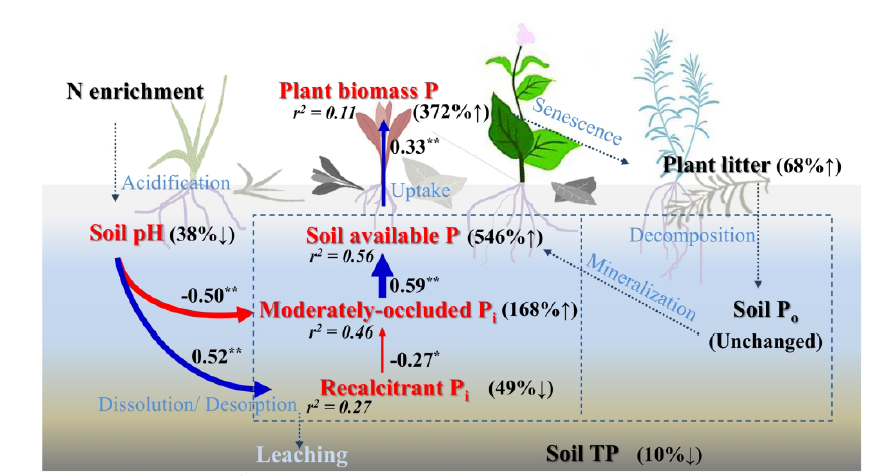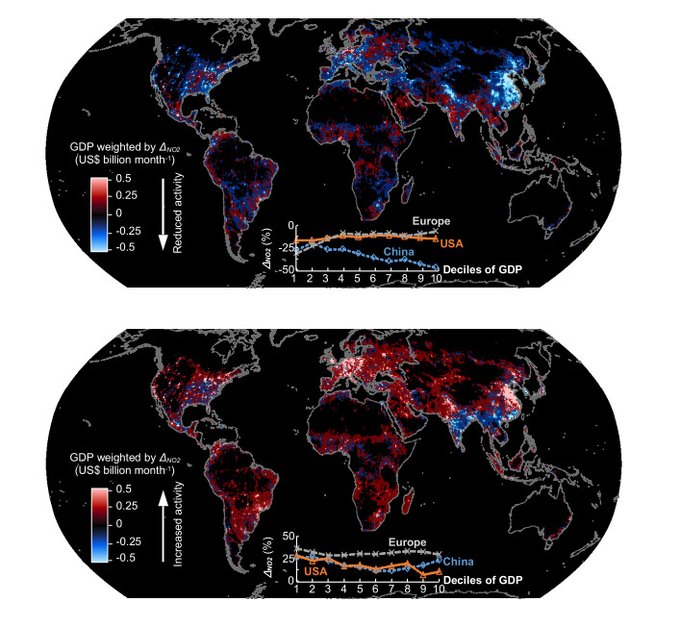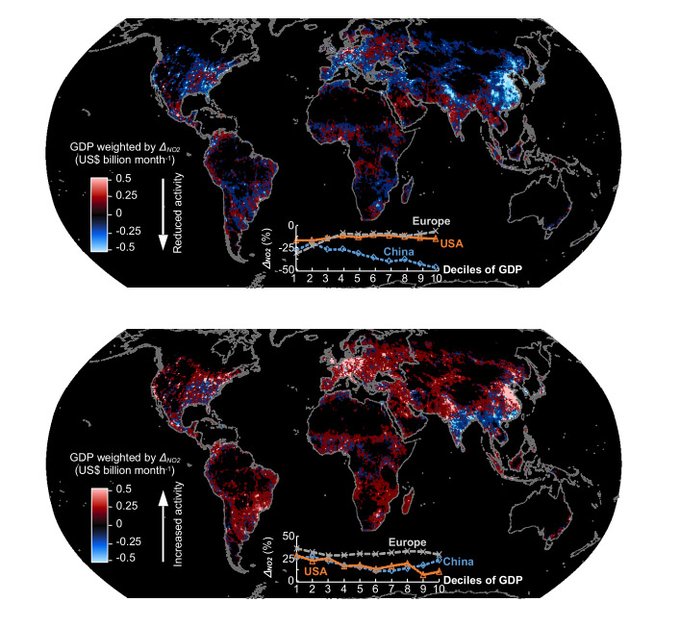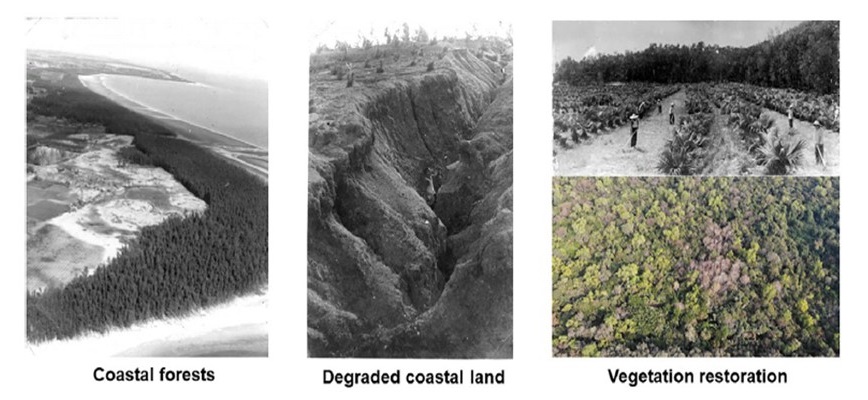The journal Science publishes on Friday 21th a perspective article by CREAF researchersJosep Peñuelas and Jordi Sardans on the imbalance of nutrients on Earth, its effects on life and possible solutions.

Human action is altering the balance of nirogen and phosphorus, two elements essential for life on earth. Image: chemistryworld.com
The text ‘The global nitrogen-phosphorus imbalance‘ is based on recent research data from both specialists, and sets out the state of the issue and its scope for the international scientific community. They also propose alternatives and solutions aimed at political decision-makers.
According to Peñuelas and Sardans, ecosystems and species are at risk due to the global nutrient imbalance caused by the different ratio of nitrogen and phosphorus in land and water. These two elements are essential for life, and their ratio is being altered by human action. Both nitrogen and phosphorus affect the growth rate of micro-organisms, plants and animals. Plant species need CO2 for photosynthesis and nutrients to build their structures, of which the ratio of nitrogen to phosphorus is key. In addition, for optimal growth, adequate amounts and ratios of nitrogen and phosphorus are required. In recent decades, however, humans have enriched the biosphere with nitrogen through over-fertilisation and thus changed its relationship with phosphorus.

“International environmental bodies should address the risk to the biosphere posed by the nitrogen-phosphorus imbalance in a coordinated global policy.”
JOSEP PEÑUELAS, researcher at CREAF & CSIC.
Alternatives to imbalance
Among the possible alternatives, experts recommend increasing the efficiency of nitrogen and phosphorus use and cycling through precision farming, which avoids disproportionate fertiliser application. They also advocate applying methods, both management and innovative biotechnology, that enhance the efficiency of plants in capturing nutrients and benefiting from phosphorus sources. Other necessary policies that Peñuelas and Sardans point to include stimulating phosphorus recycling through national and regional regulations, subsidies or legislation, as well as reducing livestock production. Such solutions are in the early stages of implementation.
Too much nitrogen
Humans are over-fertilising the biosphere with nitrogen through nitrogen oxides emitted from burning fossil fuels, planting nitrogen-fixing crops, and using enriched fertilisers that leach into waterways. Although human activities have also increased the amount of phosphorus in soils and waters – for example, applying phosphorus-rich fertilisers and detergents – the overall increase in phosphorus in the soil is still less than that of nitrogen.
In fact, these are two synergistic problems. On the one hand, the presence of nutrients in the soil has increased disproportionately, and on the other hand, the balance between nitrogen and phosphorus has been disturbed. When there are too many nutrients in the environment, it becomes eutrophic: the increase of nutrients in freshwater causes algae and phytoplankton to grow out of control, until the ecosystem collapses. As a result, some countries have developed water treatment strategies to reduce the concentration of both chemicals. However, the technology used by water treatment plants retains more phosphorus than nitrogen, which encourages even more imbalance between the two nutrients.
Stability in doubtThe global imbalance between nitrogen and phosphorus may be even greater at the local and regional level, as nitrogen and phosphorus inputs are not evenly distributed around the world.
The global imbalance between nitrogen and phosphorus may be even greater at local and regional scales, as the inputs of both compounds are not evenly distributed around the world. Phosphorus, for example, is less soluble in water and does not volatilise, often adsorbs and precipitates in soil in mineral form, and remains buried in sediments. It therefore tends to remain close to its source of emission. In contrast, nitrogen is much more water-soluble and much more volatile, which makes it easier for it to disperse over a larger radius from its emission source.
The biological impacts of the increasing imbalance between the two nutrients have been observed in inland water bodies, on the structure and function of soil living communities, as well as on the species composition of plant communities. The lack of stability will have an increasing impact as the imbalance continues to shift in the same direction.
Phosphorus human crisis
Food security and agricultural production are the main victims of this imbalance, which has a direct impact on natural ecosystems and people. Nitrogen-containing fertilisers have an unlimited source – the atmosphere – from which this nutrient can be extracted through the Haber-Bösh reaction. This innovation has allowed its production to increase steadily, as well as its use as a fertiliser since the 1950s. However, sources of phosphorus have been largely limited to mines and are concentrated in very few countries, such as Morocco.Phosphorus may become economically inaccessible to low-income and food-deficit countries as it becomes depleted or unavailable for geopolitical and economic reasons.
In this sense, phosphorus could become economically inaccessible to low-income and food-deficit countries as these sources are depleted or become unavailable due to geopolitical and economic issues. In the future, phosphorus-producing countries are likely to manage their reserves to maximise the profits of their domestic mining and agricultural industries, making phosphorus-based fertilisers increasingly unaffordable for farmers in poorer countries and further exacerbating the imbalance between the two nutrients in regions where the problem is most acute. It would be a crisis that would further aggravate the economic gap between rich and poor countries.
Phosphorus and nitrogen lack
The lack of balance between these two elements in the soil changes the chemical composition of crops and can affect the health of people who consume products grown on these soils, thus creating a public health problem. For example, in regions where there is excessive use of inorganic and organic phosphorus fertilisers, phosphorus accumulates in soils and water bodies. Food produced in these environments can cause the local population to consume excess phosphorus, which can have negative implications for their health. Nutrient imbalance is also known to affect infectious and non-infectious human diseases that are strongly associated with diet, such as coeliac disease. CREAF researchers already warned in 2021 that excessive nitrogen fertilisation of wheat crops could explain the high prevalence of coeliac disease.
As if that were not enough, CREAF researchers point out that when the relationship between nitrogen and phosphorus is destabilised, human activities also generate imbalances between other elements. For example, changes have been observed in the relationship between carbon and nitrogen, in relation to iron, zinc, calcium and potassium, among others, in plant tissues. This indirectly leads to the fact that organisms, communities and ecosystems on planet earth are having their entire elementome, their elemental composition, modified.
Source: Blog CREAF
